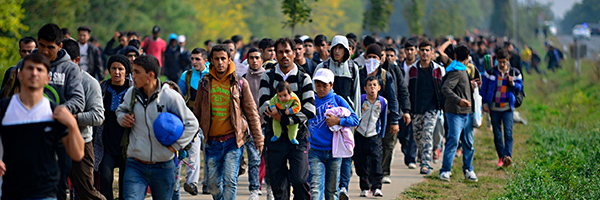On October 1, 3,000 Honduran migrants forced their way past police and soldiers as they crossed into Guatemala on their way to the U.S. southern border, but they didn’t make it far. Guatemalan President Alejandro Giammattei ordered the migrants to be detained and returned to Honduras, citing the significant health risks to Guatemalans amidst the coronavirus pandemic. On October 3, the migrants met a roadblock in San Luis Peten where they boarded buses and trucks to be returned back to their homeland.
In October 2018, 7,000 Honduran migrants began a similar journey organized and funded by Pueblo Sin Fronteras, “People Without Borders,” through various social media campaigns. The Dallas-based nonprofit misled caravanners, telling them that it would all be very easy once reaching the border. The group claimed to be fleeing economic failure and political persecution, seeking to enter the U.S. through asylum claims. However, they rejected Mexico’s offer of protection and work authorizations. Instead, caravan organizers demanded Mexico provide them with buses for safe transport to the U.S./Mexico border, which of course was rejected. It became clear that they did not meet the criteria for asylum designation. Whether the timing of the 2018 and 2020 caravans is strategic or coincidental, it highlights the importance of the immigration debate, especially this close to a presidential election.
In the past, open-borders advocates, supported by mainstream media, have ignored the vast negative impacts of migrant caravans, choosing to paint the caravans as merely women and children who pose minimal risk. However, that is far from reality. As seen with the 2018 Honduran caravan, they consist of mostly young, adult men. To make matters worse, instigators among the caravans often resorted to violence when confronted by law enforcement, throwing Molotov cocktails, rocks and other projectiles at border agents, using women and children as shields against police. These women and children often become victims of rape and sex trafficking while travelling in these groups.
Additionally, mass immigration and disease outbreak often go hand in hand. But this fact is often dismissed and silenced by groups who try to label such concerns as “xenophobic.” In the middle of a pandemic, ignoring such realities can significantly worsen the present situation as the caravanners make their way through several countries.
While this caravan did not make it to the southern border, it emphasizes the necessity of a completed border wall and increased comprehensive screenings of those trying to enter the U.S. on asylum claims. It also highlights the importance of bringing immigration issues back onto the debate floor. With such a pivotal election ahead, it is important for the public to know where each candidate stands on immigration, especially when the two candidates have such vastly different approaches to the issue.




